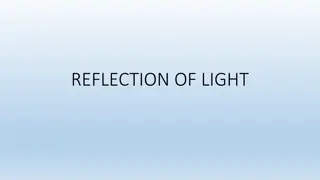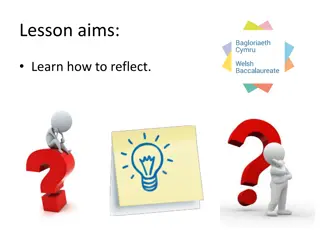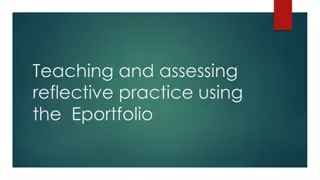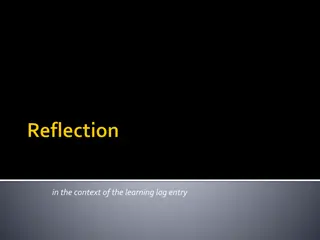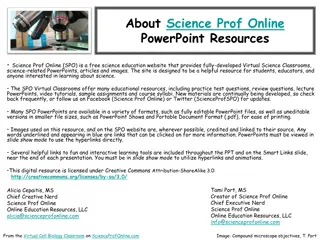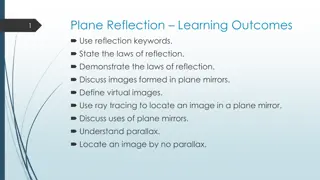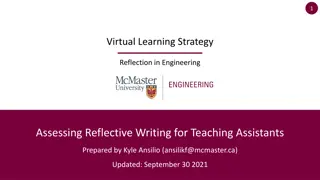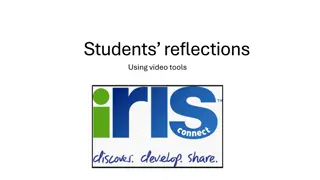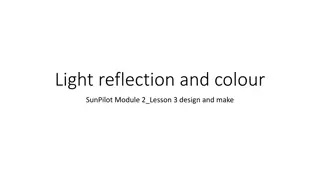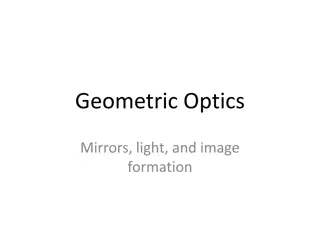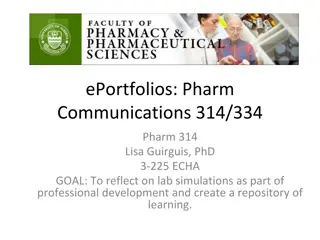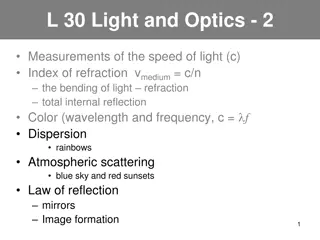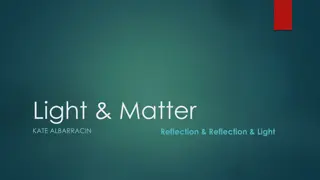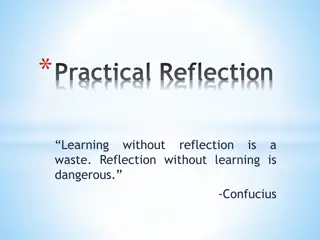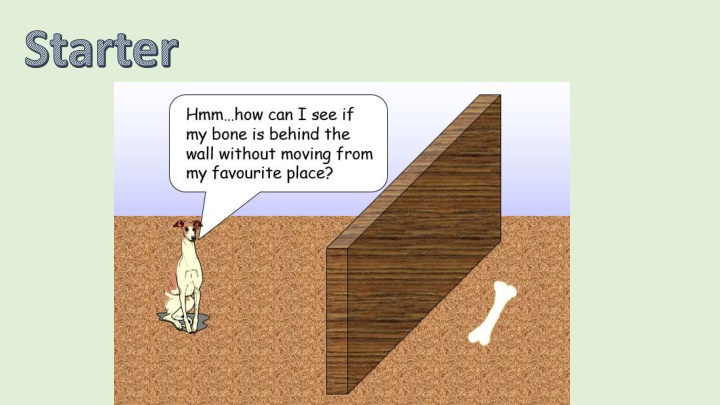
Exploring Reflection Activities and Laws in Physics
Discover the fun and educational world of reflection activities, from writing your name in a mirror to experimenting with the Law of Reflection in physics. Dive into mirror mazes, ray diagrams, and more to understand the principles of reflection. Engage in hands-on experiments and learn through interactive tasks to grasp the concepts of light reflection off mirrors.
Download Presentation

Please find below an Image/Link to download the presentation.
The content on the website is provided AS IS for your information and personal use only. It may not be sold, licensed, or shared on other websites without obtaining consent from the author. If you encounter any issues during the download, it is possible that the publisher has removed the file from their server.
You are allowed to download the files provided on this website for personal or commercial use, subject to the condition that they are used lawfully. All files are the property of their respective owners.
The content on the website is provided AS IS for your information and personal use only. It may not be sold, licensed, or shared on other websites without obtaining consent from the author.
E N D
Presentation Transcript
Reflection Activities 1. Clearly write your name. Now try and write the mirror image of your name above it. Test to see how accurate you are by putting a mirror between your words. 2. Now see if you can draw a simple object (e.g. a flower, star or house) on some scrap paper by placing a mirror on the page and just looking in the mirror. 3. See if you can predict where the lines of symmetry are in these letters. Now test your predictions with a mirror! Note: not all of the letters have lines of symmetry! A B C D E F G H I J K L M N O P Q R S T U V W X Y Z
Objectives Objectives Recall the Law of Reflection Draw a ray diagram to show what happens with reflection in a mirror
The Law of Reflection The Law of Reflection You are going to carry out an experiment to see what happens when light is reflected off a plane mirror. Using the worksheet provided, follow the method below: Set a plane mirror with its back along the line marked mirror Using a ray-box, send a narrow beam of light along the first line. Measure the angle of reflection. Record your result in a table. Repeat this for the other angles of incidence. What can you conclude from your results?
Reflection Reflection Reflection from a mirror: Normal. At right angle to mirror, helps us measure angles Incident ray, the ray that goes into the mirror Reflected ray The ray that comes from the mirror Angle of reflection Angle of incidence Plane Mirror 20/03/2025 reflection, incident
Reflection Ray Diagram Reflection Ray Diagram Copy the diagram below and add labels to show the following: NORMAL LINE, MIRROR, ANGLE OF INCIDENCE, ANGLE OF REFLECTION, INCIDENT RAY, REFLECTED RAY The angles of incidence and reflection must be ___________ for reflection to occur
Mirror maze Can you work out the reflections and show the path of the laser light to the detector? - Not all mirrors are used. - Write on the angles of incidence and reflection - Use arrows to show the direction of the laser light. Mirror Detector 45 Mirror
Reflective materials Objects that reflect light well: Have smooth, shiny surfaces and are usually pale colours. Give clear images because they reflect light regularly. Objects that do not reflect light well: Have rough, matt surfaces and are usually dark colours. Give diffuse images (or do not give any images) because they reflect light irregularly (this is called scattering), or absorb it completely.
Plenary Plenary Watch the clip about concentrating the energy of light from the sun using concave mirrors. http://www.youtube.com/watch?v=z0_nuvPKIi8
What is lateral inversion? A plane mirror reflects light regularly so it produces a clear image, which is the same size as the object. The image appears the same distance behind the mirror as the object is in front of it. What is different about the image compared to the object? When an object is reflected in a plane mirror, left appears as right and right appears as left. This type of reversal is called lateral inversion.
Curved Mirrors Curved mirrors can be convex (like the back of a spoon) or concave (like the front of a spoon). A concave mirror is used in torches, car headlights and solar cookers. Where might a convex mirror be used? Using a ray-box and concave/convex mirror, draw a ray diagram of what you see in your books like those shown here.



